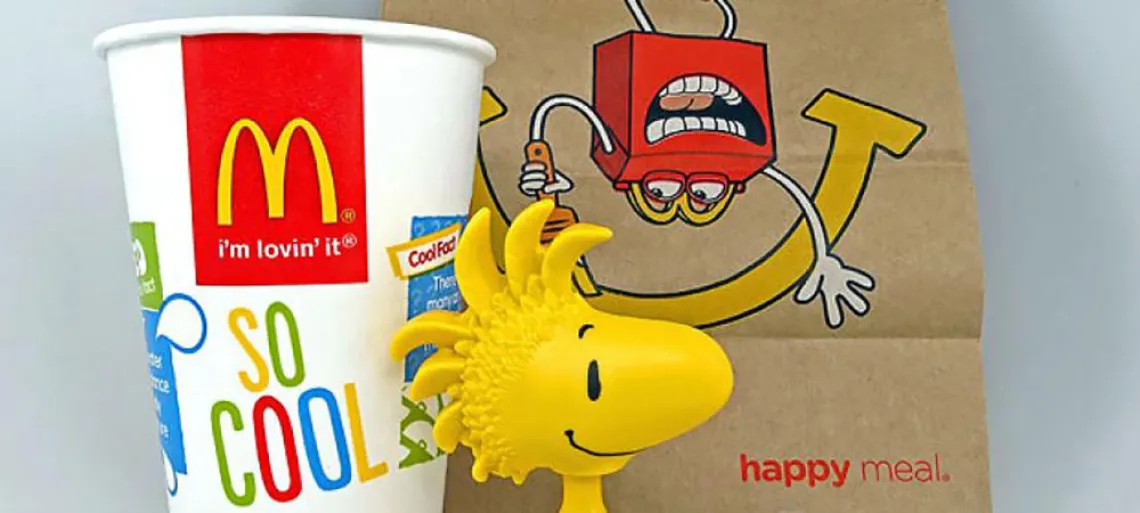When Less (Plus) is More
New research by Eller's Martin Reimann shows “Happy Meal effect” can motivate adults to pass on bigger portions

TUCSON, Ariz. – Dec. 1, 2015 – It’s no shocker that McDonald’s wins in global fast food sales, but you might be surprised to learn it’s also the world’s largest toy distributor, supplying more than 1.5 billion playthings annually via the iconic Happy Meal. Fat- and salt-laden calories aside, Happy Meals enchant kids, and as a result, one in ten dollars spent at McDonald’s go to smaller-portion foods. Could the same principle be leveled at America’s obesity crisis? That is, beyond the Happy Meal, would people opt for less if food were paired with some non-ingestible bonus? Martin Reimann at the University of Arizona’s Eller College of Management recently showed they would.

In a series of seven experiments, Reimann and co-investigators Antoine Bechara and Deborah MacInnis of the University of Southern California demonstrated repeatedly not only kids but also adults will often pass on larger portions when given the choice of a smaller portion paired with some very modest non-food bonus. In fact, just the possibility of getting a “prize” incentivized people to forego larger portions.
In one experiment, 78 percent of sixth-graders passed up a full sandwich when given the option to take a half sandwich plus a pair of dollar-store earbuds. In another, university staff and students were significantly more likely to choose half-portion lunches when they were paired with the mere chance of winning a $100 gift card or 10,000 frequent flier miles.
Altogether, converging results, showing not only that non-food incentives reliably encourage people to choose smaller portions but also that:
- For rewards not guaranteed, knowing the odds of winning can be less motivating than simply knowing winning is a possibility (even when the odds are relatively good)
- The same reward can remain motivating time and again (three days running, in one experiment using the chance to win a gift card or frequent flier miles);
- Participants choosing smaller portions don’t “make up” those foregone calories by eating more later or the next day;
- Smaller portions paired with bonuses or potential prizes activate the same reward, desire and motivation areas of the brain that “light up” for full-sized portions (revealed via fMRI testing)
The experiments also yielded some notable anomalies. For example, school children asked to choose between pictures of a full-sized portion or a half-portion plus a toy chose the latter significantly more often except when the foods in question were chicken nuggets or cookies. In those cases, choices were almost evenly split, perhaps because both foods have high sugar content (factoring in the sweet dipping sauces that usually accompany nuggets).
In another experiment, while hunger level, age and body mass index had no significant effect on who chose full- vs. half-plus-prize portions, gender did have a significant effect, with women more likely to choose full-size portions. Yet another experiment showed that while the possibility of winning money was always motivating, a $10 and $50 sweepstakes prizes had exponentially greater impacts, but a $100 prize was no more motivating than $50.
Overall, however, the takeaways are clear: Non-food rewards—guaranteed and uncertain, in both hypothetical and real situations—make people significantly more likely to choose less food, and for Reimann, that fact swings open a compelling door of possibilities for personal and social change.
“Overconsumption makes people unhealthy and unhappy,” he said, “Yet trying to regulate consumption by law threatens people’s sense of freedom to choose. If non-food rewards, even small and uncertain ones, can be just as engaging at a neurochemical level, then restaurants can potentially motivate healthier choices without jeopardizing sales, and consumers have more paths to avoid overeating. In general, these studies open up a whole new matrix of ways we might begin to change unhealthy food cultures and behaviors.”
Results of the seven experiments on nonfood incentives appear in two articles by Reimann, assistant professor of marketing at the UA Eller College of Management and founding editor of the Journal of Neuroscience, Psychology, and Economics; in collaboration with Antoine Bechara, professor of psychology, and Deborah MacInnis, vice dean for research and strategy and professor of marketing, both at the University of Southern California.
“Leveraging the Happy Meal Effect: Substituting Food with Modest Nonfood Incentives Decreases Portion Size Choice,” appeared this year in Journal of Experimental Psychology: Applied, Vol. 21 No. 3; “Can Smaller Meals Make You Happy? Behavioral, Neurophysiological, and Psychological Insights Into Motivating Smaller Portion Choice,” will be published in a forthcoming issue of Journal of the Association for Consumer Research.

